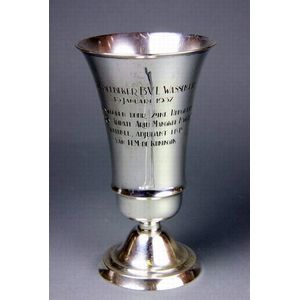Emerald and Diamond Gypsy Ring with Certificate
You must be a subscriber, and be logged in to view price and dealer details.
Subscribe Now to view actual auction price for this item
When you subscribe, you have the option of setting the currency in which to display prices to $Au, $US, $NZ or Stg.
- Emeralds - Emeralds have been used in jewellery making for thousands of years, and are prized for their deep green colour, which is caused by the presence of chromium and vanadium in the mineral beryl. Because of their rare colour, emeralds are often more valuable than diamonds of a similar size and quality. In jewellery making, emeralds are typically cut into round or oval shapes to maximize their color and clarity. They are often set in gold or platinum and used as the centrepiece of a piece of jewellery, such as a ring or necklace. They can also be used in combination with other gems, such as diamonds, to create intricate and beautiful designs.
- Cabochon Cut in Jewellery - A cabochon cut is a type of gemstone cutting where the stone is cut and polished in a convex shape with a flat bottom and a domed top, with no facets. This type of cut is typically used for opaque or translucent stones that have natural patterns or inclusions that are best displayed in this type of cut. Examples of stones that are often cut as cabochons include turquoise, opal, and moonstone.
- Brilliant Cut - In their naturally occuring state diamonds have little life or sparkle and for many centuries were simply cut in half and worn in amulets. Invented at the end of the 17th century by a Venetian diamond cutter, a "brilliant cut" diamond has 58 facets arranged in a regular geometric relationship, with 33 above the crown and 25 below on the pavilion.
The introduction of the brilliant cut increased the popularity of diamonds in jewellery as it was the first cut to reveal the fire of the diamond, with the light being internally reflected from one facet to another, and was superior to the previously used table cut and rose cut.Variants to the brilliant cut have emerged since the end of the 17th century, but the popularity of the original brilliant cut has continued to the present time, where it is still the most commonly found cut.
.
This item has been included into following indexes:
-
rings, diamond
- diamond and emerald 1,181
- diamond and emeralds 2,182
Visually similar items

A solitaire diamond ring and band, comprising a square modified brilliant cut diamond of 1.02cts, accompanied by a princess cut diamond half hoop band totalling 0.25cts, both mounted in platinum, ring sizes K, accompanied by GIA diamond report number 11096

A diamond dress ring, centrally set with a row of baguette cut diamonds, flanked by two rows of round brilliant cut diamonds all totalling 1.72cts, mounted in 18ct white gold, ring size O

A German 830 silver trophy cup, M.H. Wilkens and Söhne, Bremen-Hemelingen, circa 1937, the tall goblet-shaped cup with a flared mouth and tapering body on a spreading circular foot, engraved with a long dedicatory inscription in Colonial (Indonesian?) Dutc

An antique Scottish agate and gold bangle, the oval hinged bangle having a central pierced cross overlaid with a cross and a crown, highlighted with various coloured agate and seed pearls, with engraved decoration and bloomed finish, all mounted in 15ct ye
